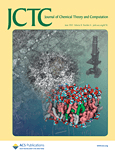
Journal of Chemical Theory and Computation
Scope & Guideline
Pioneering Insights in Chemical Computation
Introduction
Aims and Scopes
- Computational Chemistry:
The journal focuses on computational methods and their applications in chemistry, targeting areas such as quantum chemistry, molecular dynamics, and statistical mechanics. - Molecular Modeling:
Research involving the modeling of molecular systems using theoretical frameworks to predict molecular behavior, properties, and interactions. - Machine Learning in Chemistry:
An emerging focus on integrating machine learning techniques with traditional computational methods to enhance predictive accuracy and efficiency. - Quantum Chemistry:
Papers often delve into quantum mechanical approaches, including density functional theory (DFT), coupled cluster methods, and quantum dynamics. - Interdisciplinary Approaches:
JCTC encourages interdisciplinary research that combines chemistry with fields such as materials science, biology, and environmental science. - Benchmarking and Method Development:
A significant emphasis on benchmarking new methods against established standards to validate their accuracy and applicability in practical scenarios.
Trending and Emerging
- Machine Learning Applications:
The integration of machine learning techniques into computational chemistry is trending, with researchers applying these methods to enhance predictive capabilities and optimize molecular simulations. - Quantum Computing in Chemistry:
An increasing number of studies are exploring the application of quantum computing to solve complex chemical problems, indicating a growing interest in this cutting-edge field. - Enhanced Sampling Techniques:
Research focusing on enhanced sampling methods, such as metadynamics and adaptive biasing, is on the rise, reflecting a need for more efficient exploration of complex energy landscapes. - Multiscale Modeling Approaches:
There is a growing trend towards multiscale modeling that combines different levels of theory to address complex chemical systems, allowing for more accurate and comprehensive simulations. - Coupled Quantum-Classical Methods:
The development of hybrid methods that integrate quantum mechanical and classical approaches is gaining traction, particularly for studying systems with significant electronic correlation. - Nonadiabatic Dynamics:
Research into nonadiabatic processes, particularly in the context of photochemistry and excited-state dynamics, is becoming more prevalent, reflecting the importance of these phenomena in chemical reactions.
Declining or Waning
- Traditional Molecular Dynamics:
While still important, traditional, non-enhanced molecular dynamics simulations are being overshadowed by more sophisticated sampling techniques and hybrid methods that combine various approaches. - Empirical Force Field Models:
As machine learning and quantum methods gain traction, reliance on classical empirical force fields for molecular simulations appears to be decreasing, with fewer studies focusing solely on these methods. - Static Analysis Techniques:
The focus on static energy calculations and analyses is waning, as dynamic, time-resolved studies gain popularity, reflecting a shift towards understanding molecular processes over time.
Similar Journals

BMC Chemistry
Elevating Chemical Science with Impactful ResearchBMC Chemistry, published by BMC, is a reputable open access journal that has made significant strides since its inception in 2019. Operating under e-ISSN 2661-801X, this journal is dedicated to advancing the field of general chemistry by promoting high-quality research across various sub-disciplines. Headquartered in the United Kingdom, BMC Chemistry boasts a commendable impact factor and is classified in Q2 within the prestigious field of Chemistry (miscellaneous) according to the 2023 category quartiles. The journal's Scopus ranking places it at #139 out of 408 in its category, highlighting its growing relevance and influence in the academic community, with a commendable 66th percentile standing. With a commitment to open access, BMC Chemistry ensures that groundbreaking discoveries and innovative research are available to a global audience, fostering collaboration and development in chemistry. Researchers, professionals, and students alike will find this journal to be an invaluable resource for disseminating knowledge and driving scientific advancement.
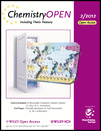
ChemistryOpen
Empowering Research Through TransparencyChemistryOpen is a leading open access journal published by WILEY-V C H VERLAG GMBH, dedicated to advancing the field of chemistry. With its ISSN 2191-1363, this journal has been a vital platform since its inception in 2012, promoting unrestricted access to innovative research findings and critical reviews in various chemistry domains. As a testament to its growing influence, ChemistryOpen has achieved a commendable Q2 quartile ranking in the 2023 Chemistry (miscellaneous) category, which highlights its quality and impact within the academic community. Researchers, professionals, and students benefit from the journal's commitment to making high-quality research accessible, facilitating knowledge transfer and collaborative insights among chemists worldwide. The journal's transparent open access model ensures that groundbreaking discoveries and methodologies are readily disseminated, fostering a culture of innovation and interdisciplinary dialogue in the ever-evolving landscape of chemistry.

THEORETICAL CHEMISTRY ACCOUNTS
Illuminating the Future of Chemistry Through Theoretical ExplorationTHEORETICAL CHEMISTRY ACCOUNTS is a prestigious journal dedicated to promoting the advancement of theoretical and computational chemistry. Published by Springer, this journal has become a vital resource for researchers, professionals, and students seeking to explore innovative theoretical approaches in chemistry since its inception in 1996. With a current impact factor positioning it in the Q3 category of Physical and Theoretical Chemistry, it underscores its importance in the academic landscape, ranking 113 out of 189 in its field according to Scopus. The journal embraces an Open Access model, making cutting-edge research widely accessible to the global community. Researchers are encouraged to submit their latest findings and theoretical advancements, contributing to the ever-expanding body of knowledge within this dynamic field. Addressing contemporary challenges and breakthroughs, THEORETICAL CHEMISTRY ACCOUNTS serves as an essential platform for dialogue and discovery among scholars dedicated to the intersection of chemistry and theory.
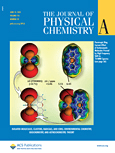
JOURNAL OF PHYSICAL CHEMISTRY A
Advancing the frontiers of molecular understanding.Journal of Physical Chemistry A, published by the American Chemical Society, serves as a leading platform for disseminating high-quality research in the fields of physical and theoretical chemistry. With an ISSN of 1089-5639 and E-ISSN of 1520-5215, this journal maintains a rigorous standard, demonstrated by its position in the Q2 category for both physical and theoretical chemistry as well as miscellaneous medicine within its 2023 category quartiles. As part of the greater ACS network, it operates with a solid Scopus rank of 76/189, placing it within the 60th percentile, emphasizing its credibility and impact in the chemistry community. The journal's objective is to enhance the understanding of molecular phenomena through innovative experimental and computational approaches, making it essential reading for researchers, professionals, and students seeking to advance their knowledge and contribute to scientific discussion. With additional open access options, the Journal of Physical Chemistry A continues to foster collaboration and the sharing of ideas in the vibrant scientific landscape of the United States and beyond.

JOURNAL OF MATHEMATICAL CHEMISTRY
Fostering Interdisciplinary Collaboration in Mathematical ChemistryJOURNAL OF MATHEMATICAL CHEMISTRY is a prominent peer-reviewed journal published by Springer, dedicated to the field of mathematical chemistry. With an established history dating back to 1987, this journal serves as a vital platform for researchers to disseminate innovative findings and methodologies that combine the principles of mathematics with chemical science. Currently, it holds a commendable impact factor and ranks in the Q2 category for both applied mathematics and miscellaneous chemistry in 2023, showcasing its influence within these disciplines. The journal is indexed under Scopus, with notable rankings that place it in the top quartile among related works, ensuring high visibility and academic rigor. While access to its content is not open, the journal maintains a dedicated readership of professionals, researchers, and students eager to explore the computational and theoretical aspects of chemistry. The JOURNAL OF MATHEMATICAL CHEMISTRY continues to enrich the scientific community by fostering interdisciplinary collaboration and advancing quantitative approaches in chemical research.

JOURNAL OF COMPUTER-AIDED MOLECULAR DESIGN
Transforming Theoretical Chemistry with Computational ExcellenceJOURNAL OF COMPUTER-AIDED MOLECULAR DESIGN, published by Springer, serves as a premier platform for researchers in the fields of computer science applications, drug discovery, and physical and theoretical chemistry. Since its inception in 1987, the journal has played a pivotal role in advancing the methodologies and technologies used in molecular design and screening. With an impressive impact factor and a ranking within the top quartile across related disciplines, this journal offers invaluable insights and innovative approaches that are essential for scholars and practitioners in these dynamic fields. The journal's rigorous peer-review process ensures high-quality publications that contribute significantly to both theoretical and practical advancements. Though it operates under a subscription model, the journal remains dedicated to fostering knowledge dissemination and collaboration among researchers.

Results in Chemistry
Fostering Collaboration in Chemistry Across BordersResults in Chemistry is a prominent journal published by Elsevier, dedicated to fostering innovation and disseminating cutting-edge research in the field of chemistry. With an ISSN of 2211-7156, this open-access journal has been committed to making scientific knowledge widely available since 2019, aligning with the global trend towards accessibility in research. Based in the Netherlands, it features interdisciplinary studies that span the breadth of general chemistry, contributing significantly to the academic dialogue within the scientific community. Despite currently holding a Q3 ranking in the miscellaneous category of chemistry and occupying the 228th position out of 408 in Scopus rankings, the journal is poised for growth, aiming to enhance its impact and visibility. Researchers, professionals, and students alike will find invaluable resources and insights within its pages, making Results in Chemistry an essential platform for those looking to stay abreast of advancements and trends in chemistry research up to the year 2024.
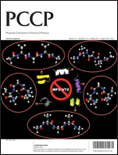
PHYSICAL CHEMISTRY CHEMICAL PHYSICS
Empowering Researchers to Shape the Future of Chemistry and PhysicsPhysical Chemistry Chemical Physics is a premier interdisciplinary journal published by the Royal Society of Chemistry, dedicated to advancing the fields of physical chemistry and chemical physics. With an impressive impact factor and categorized in the Q2 quartiles for both Physical and Theoretical Chemistry and Physics and Astronomy, this journal serves as a vital platform for the dissemination of high-quality research findings from 1999 through 2024. Based in the United Kingdom, the journal is committed to providing open access to its articles, enhancing the visibility and accessibility of research to a global audience. Researchers, professionals, and students alike are encouraged to contribute to this esteemed journal, ensuring impactful discussions and significant advancements in the understanding of chemical and physical phenomena. With strong Scopus rankings underscoring its relevance, Physical Chemistry Chemical Physics stands out as an essential resource for specialists striving to innovate and excel within these dynamic fields.
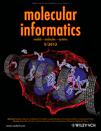
Molecular Informatics
Exploring the Intersection of Chemistry and Computational ScienceMolecular Informatics is a prestigious journal published by WILEY-V C H VERLAG GMBH, dedicated to advancing the fields of computational analysis and molecular modeling. As a key resource in the realms of Computer Science Applications, Drug Discovery, Molecular Medicine, Organic Chemistry, and Structural Biology, this journal is recognized for its significant contributions and is ranked in the Q2 and Q3 categories across multiple disciplines, positioning it among the leading journals for researchers and academics. With an impressive track record since its inception in 2010 and converging its contributions until 2024, Molecular Informatics aims to bridge the gap between computational techniques and biological applications, promoting interdisciplinary collaboration and innovation. Accessible to a global audience, the journal reflects a commitment to advancing science through open access options, making cutting-edge research available to students, professionals, and decision-makers alike. This journal serves as an indispensable platform for disseminating high-quality research and fostering the development of new theoretical and practical frameworks in molecular informatics.
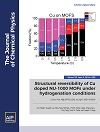
JOURNAL OF CHEMICAL PHYSICS
Charting New Territories in Physics and AstronomyJOURNAL OF CHEMICAL PHYSICS, published by AIP Publishing, stands as a premier scholarly source within the realms of physical and theoretical chemistry, as well as physics and astronomy. With an enduring history dating back to 1933 and converging until 2024, this journal has established itself as a cornerstone of the scientific community, evidenced by its prestigious Q1 categorization in multiple fields, including medicine and general physics. It is ranked 37th out of 243 in the general physics and astronomy category and holds a commendable 39th position in physical and theoretical chemistry according to Scopus rankings, highlighting its significant impact in these disciplines. Although not an open-access journal, it caters to a wide audience of researchers, professionals, and students seeking to deepen their understanding of the interactions and dynamics of chemical systems. With its expertly curated content, the JOURNAL OF CHEMICAL PHYSICS continues to play a vital role in advancing knowledge and fostering innovation across its core subjects.